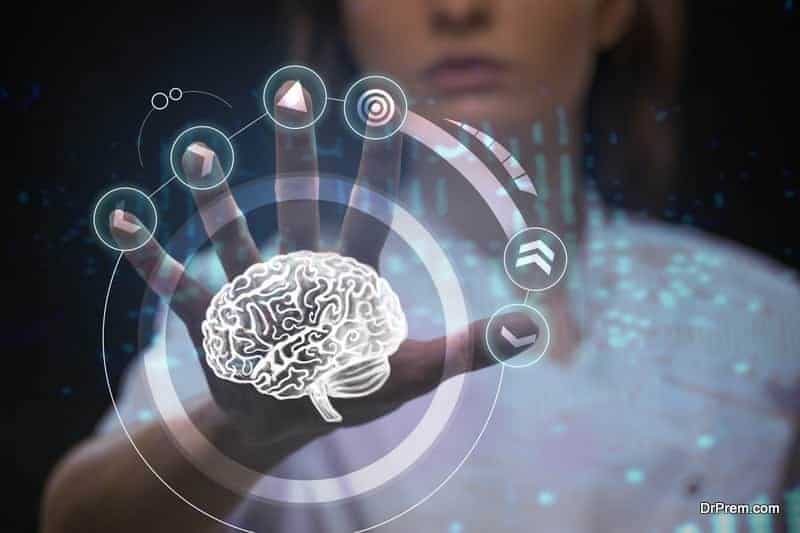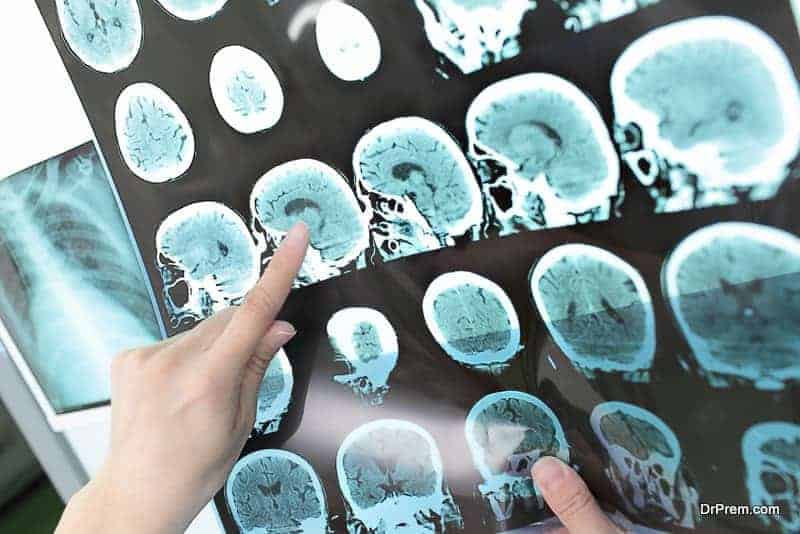Imagine controlling the laptop or desktop mouse with your mind. How about transmitting signals to another person’s brain allowing him to see, hear or feel special senses? It may sound like a fiction but Brain-Computer Interface (BCI) can make this happen.
Brain-Computer Interface enables you to command and communicate with your mind
Often called as a Mind Machine Interface (MMI), it acts as a powerful communication channel between the user and the computer system that one doesn’t need any physical movement or device to put the commands for completing an interaction.
Brain- Computer Interface technology is gradually finding applications in healthcare ranging from prevention to treatment and rehabilitation from serious neural injuries. Assistive devices are being created to help in restoring the movement in physically challenged and locked-in persons who have lost their motor functionality. Promising features of BCI have further encouraged its application in able-bodied users in creating innovative hands-free applications.
What BCI does?

How Brain-Computer Interface technology works?
The function of BCI is based on either observing the user or allowing him/her to deliver ideas. The BCI interface records the brain waves and sends it to the computer to finish the desired task. The ideas expressed by the user are transmitted via the brain waves. It is a way of decoding silent messages or thoughts from the brain.
The recent BCI interface is primarily based on non-invasive Electroencephalography (EEG) where visually evoked potentials (VEP) are commonly utilized. The generation of VEP signals depends on eye movements, cranial nerve pathways and ocular muscles and is often considered as dependent BCI.
Electroencephalography (EEG) and magneto-encephalography (MEG) are used as the interface attached to the scalp to record all electrical and magnetic signals.
BCI applications in Healthcare:

Preventive application:
Smoking and drinking create special brainwaves having a direct impact on attentiveness. BCI technology can analyze the decrease in alertness and can prevent further damage. Similar analysis can prevent traffic accident deaths and injuries.
A driver’s concentration falls due to motion sickness, which is a state of conflicting sensory information generated by the body via ears and eyes that reaches the brain. A set of EEG powered indicators can predict the motion sickness and monitor the driver’s state of alertness on a real-time basis and prevent disastrous consequences.
Forecasting and detecting health issues:
- BCI monitoring can detect abnormal brain structure, sleep disorder, seizure and swelling of the brain as in encephalitis.
- It helps in early diagnosis of Dyslexia by studying the behavior of brain helping children develop their learning ability and skill to lead a self-confident life.
- The EEG signals deployed by BCI interface can identify Idiopathic Rapid Eye Movement Sleep Behavior Disorder (iRBD), a strong precursor of Parkinson’s disease.
- BCI intervention can also assist in improving workplace wellness assessing the cognitive state of a worker by analyzing the workload fatigue sent by brainwaves.
Treatment and restorative application:
BCI technology brings hope to individuals suffering from serious motor disabilities caused by stroke, spinal cord injury, amyotrophic lateral sclerosis or other neuromuscular injuries.
- The prime objective of BCI application is to restore the motor control of paralyzed patients with the help of motor neuroprosthesis or robotic arm.
- BCI enabled environment control can improve the quality of life of home-confined severely disabled people enabling them to control their room temperatures, lighting, power beds and TV operation.
- BCI driven wheelchairs are also being envisaged to restore independent locomotion of paralyzed patients to some extent.
- BCI systems also have the potential to be used as therapeutic tools for neuro-rehabilitation in people with impaired neuromuscular function caused by stroke or trauma.
- BCI enabled rehabilitation training with real, virtual and augmented approaches are being exploited. Decoded brain signals from healthy persons can be applied in modifying the thinking power of stroke patients by retraining the unaffected areas of the brain.
Challenges with BCI:
- Studying countless signals generated from about 100 billion neurons is not easy. All thoughts and actions do not result from simple electric signals. There are some chemical processes which EEG cannot detect.
- The signals generated are weak and are vulnerable to interference.
- Implanted brain electrodes may cause scarring of brain tissue in the long run.
- The entire system is hardly portable with wired connections making things complex. Even with wireless settings, the user has to carry a computer which is quite weighty.
Vulnerability to cyber crime:
- A major challenge lies in its vulnerability to hacking raising the question of cloud storage and data privacy. Research has established BCI’s vulnerability to cybercrime and is termed as ‘Brain hacking’ and ‘Neuro Hacking’. BCI devices can be easily hacked by using a laptop and other system installations.
- Neurocrime may even involve physically harming the patients by disrupting the devices or increasing the voltage of signals. This can also aid in depriving the patients of their computer-enhanced motor functions and cause immense psychological distress.
- Any reprogramming of the device by hackers can prevent the patient from speaking, moving and performing other simple activities. This can cause irreversible damage to the patient’s brain which can be life threatening.
- Breaching of data privacy is another big issue infringing on the universal right to freedom of privacy.
Decline in patient’s interest:
A study by the American Academy of Neurology in 2018 found that it was common for patients to lose interest in BCI devices in home settings other than a clinical or research setting. About 14% of amyotrophic lateral sclerosis patients lost interest in BCI devices in a study period of 12-18 months.
What BCI holds in future?
Apart from healthcare applications, advanced BCI integrated with IoT (Internet of Things) would also find its use in smart houses, workplaces, transportation offering better human control in safety, luxury and daily-life physiological operations. The industry is envisaged to touch $1.46 billion by 2020 from $0.696 billion in 2017.











